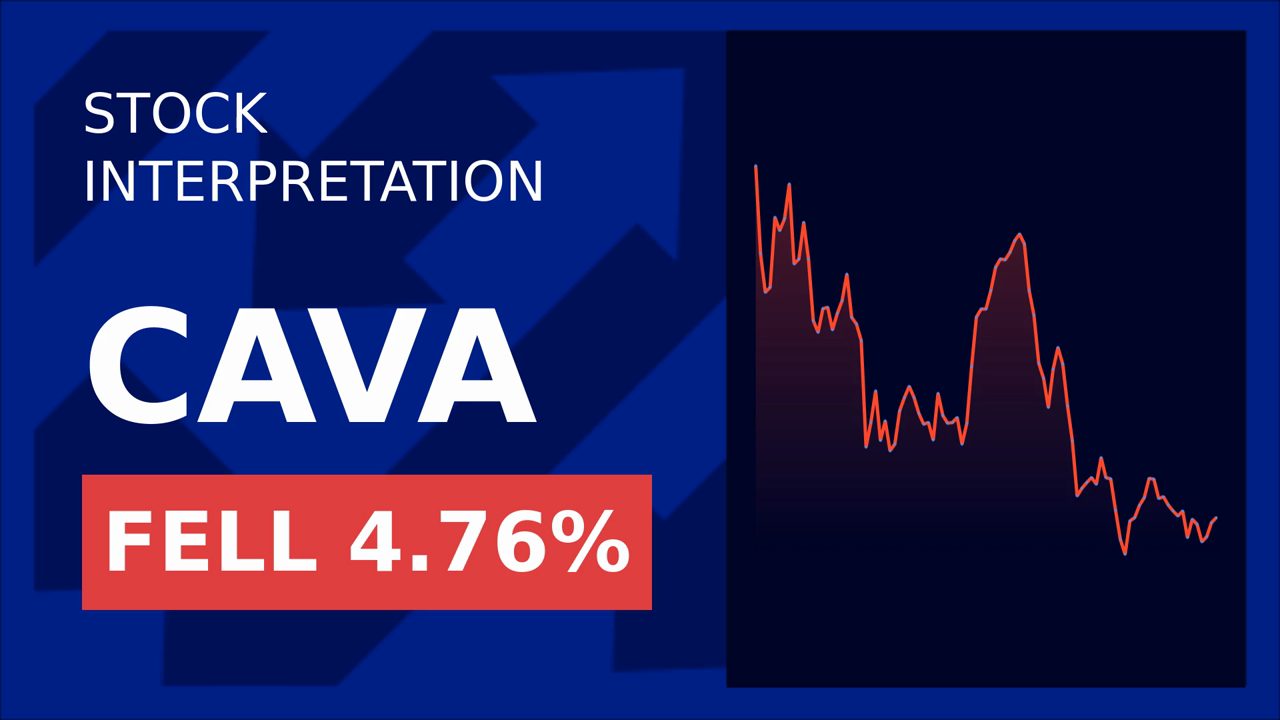The 43% Drop: Is Cava Group (CAVA) a 20-Year Growth Gem or a Recipe for Disaster?

Cava Group (CAVA) has seen its stock price plummet 43% from its peak, sparking debates about whether this Mediterranean fast-casual chain is a bargain at current levels—or a risky bet for long-term investors. The question is urgent: Should you buy CAVA now, ride the growth wave, and hold it for two decades? Let’s dissect the data.
The Case for Buying CAVA: Growth, Momentum, and Ambition
Cava’s fundamentals are undeniably strong. In fiscal 2024 (ending December 2024), the company delivered 35.1% revenue growth to $954 million, fueled by 13.4% same-store sales growth and a 25% restaurant-level profit margin. Its fiscal 2025 outlook is equally bullish: management targets 6%–8% same-store sales growth, $150 million+ in adjusted EBITDA, and the opening of 62–66 new locations this year alone. By 2032, CAVA aims to surpass 1,000 restaurants, up from 367 today.
This trajectory aligns with broader trends in the Mediterranean fast-casual sector, which is projected to grow at a 3% CAGR through 2025, driven by demand for customizable, health-conscious dining. Competitors like SAJJ and The Great Greek are also expanding, but CAVA’s early-mover advantage and unit economics ($2.9 million average restaurant sales) suggest it can scale profitably.
The Risks: Valuation, Competition, and Execution
Yet CAVA’s 43% decline isn’t arbitrary. The stock trades at a price-to-sales ratio of 10.6, implying a 50x+ multiple on projected 2030 profits, which is far higher than the average for restaurant stocks. While growth is strong, it’s not without headwinds:
- Valuation Overhang: CAVA’s $10 billion market cap assumes flawless execution. A misstep in same-store sales growth or margin compression could send shares reeling.
- Competitive Pressure: Mediterranean cuisine’s popularity has attracted competitors, and CAVA’s menu isn’t immune to copycats. Its 2025 same-store sales target (6%–8%) is a marked slowdown from 2024’s 13.4%, hinting at saturation risks.
- Supply Chain and Labor Costs: Expanding to 1,000+ stores will strain supply chains and labor markets. Rising input costs (e.g., for grilled steak) and wage pressures could eat into margins.
Market Context: Mediterranean Dining’s Golden Age?
The Mediterranean fast-casual segment is thriving. The Great Greek Mediterranean Grill, for example, grew systemwide sales by 46% in 2024 while expanding into Canada and Egypt. CAVA’s focus on customizable bowls, digital ordering, and loyalty programs positions it well against rivals like Chipotle (CMG) and Wingstop (WING), which often rely on slower growth models.
However, the sector’s success depends on sustained consumer interest. Mediterranean cuisine’s appeal hinges on its “healthy” image and global flavors—both of which could wane over time.
The 20-Year Horizon: Is This a Buy-and-Forget Stock?
For a 20-year hold, CAVA must survive two decades of economic cycles, shifting tastes, and operational challenges. Here’s what investors need to believe:
- Mediterranean Cuisine Remains Hot: CAVA’s growth relies on sustained demand for its menu, which has no obvious expiration date compared to trends like avocado toast.
- Unit Economics Stay Strong: Its 25% restaurant-level margins must hold as it scales.
- Expansion Doesn’t Sacrifice Quality: Opening 60+ stores annually requires flawless supply chain management and brand consistency.
Conclusion: A Risky, but Potentially Rewarding Bet
Cava Group is a high-risk, high-reward proposition. The stock’s 43% decline creates a buying opportunity for investors who believe in its long-term potential—but only if they can stomach volatility and overvaluation risks.
Key Data Points Supporting a “Hold” for 20 Years:
- Revenue Growth: 35% in 2024 vs. peers’ low-single-digit growth.
- Unit Economics: $2.9 million average restaurant sales vs. Chipotle’s $4.3 million, suggesting room to grow.
- Market Opportunity: Mediterranean restaurants account for only 10% of the U.S. fast-casual market, leaving space for expansion.
Red Flags:
- Valuation: 50x+ forward P/E multiples are a stretch for a company not yet profitable on a consistent basis.
- Execution: 62–66 new stores in 2025 require flawless execution, which is far from guaranteed.
In short, CAVA could be a generational winner if it meets its 2032 goal of 1,000 stores and sustains margins. But if growth stalls or costs rise, this stock could remain a laggard. For buy-and-hold investors with a 20-year horizon, allocate a small portion of your portfolio to CAVA—say 2–5%—and set strict exit rules if margins deteriorate or same-store sales fall below 5% growth.
The Mediterranean wave is rising, but only the strongest brands will stay afloat for decades. CAVA has the tools, but the journey won’t be smooth.










